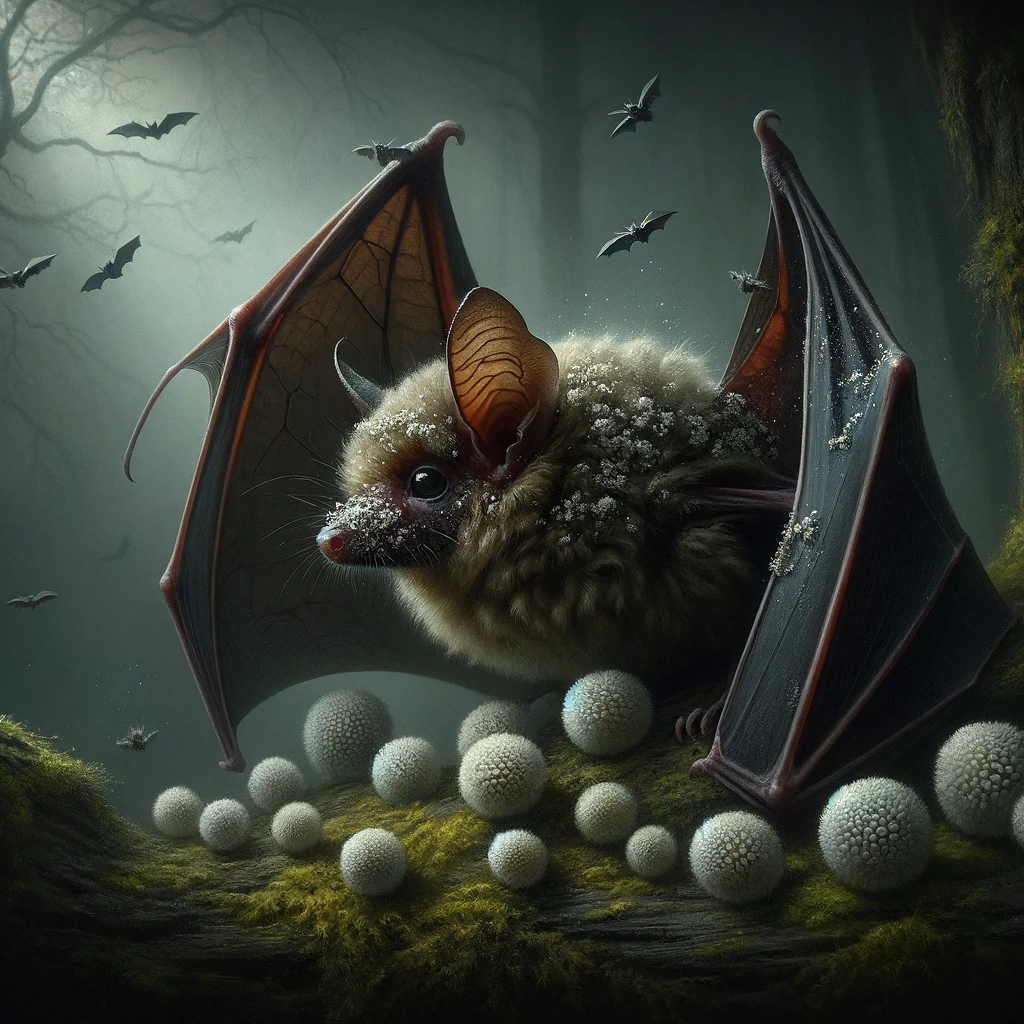In the tranquil depths of America’s caves and forests, a silent menace lurks, threatening one of nature’s most enigmatic creatures—the bat. White-Nose Syndrome (WNS) has emerged as a grave concern for bat populations across the United States, casting a shadow over their existence and ecosystem stability.
The Fungal Foe
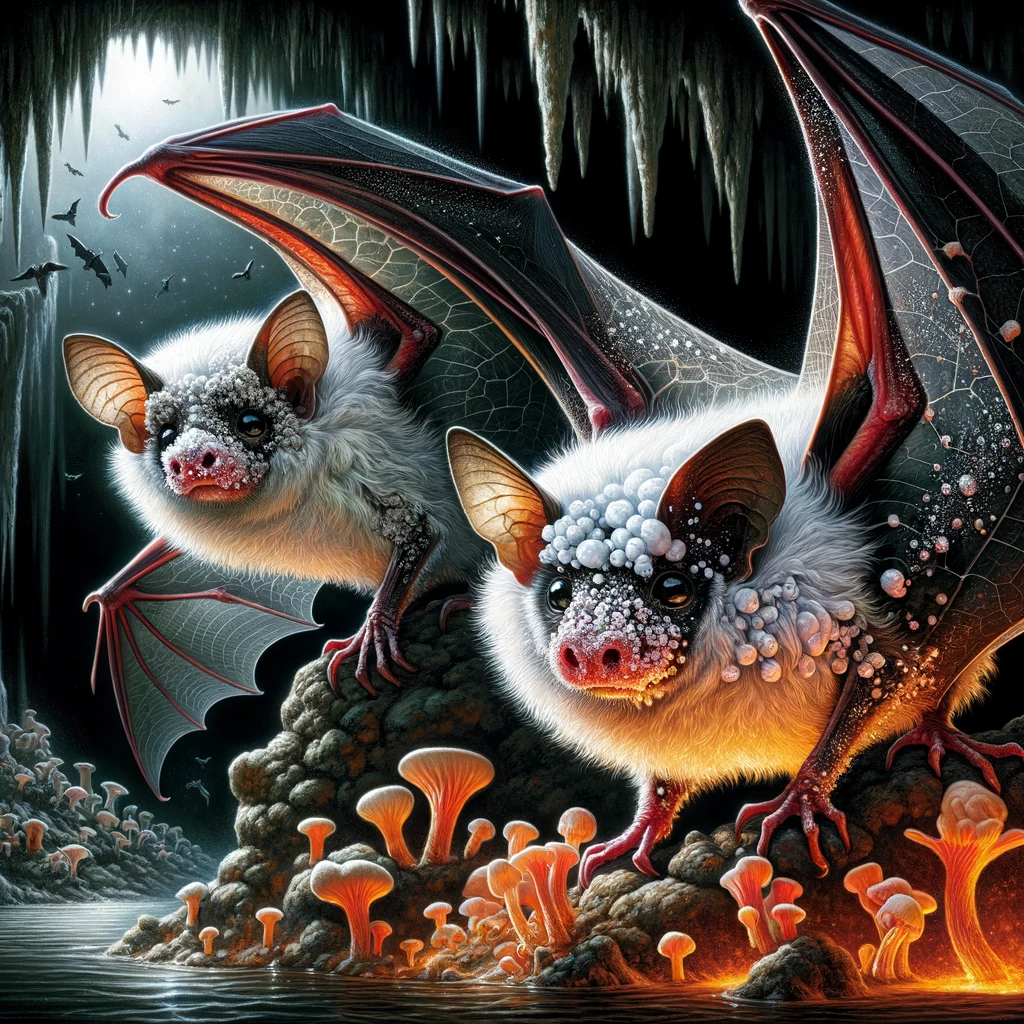
First documented in New York in 2006, WNS has since spread like wildfire, affecting numerous bat species across vast regions of North America. Named for the distinctive white fungal growth that appears on the muzzles and wings of infected bats, WNS is caused by the fungus Pseudogymnoascus destructans.
Ecological Imbalance
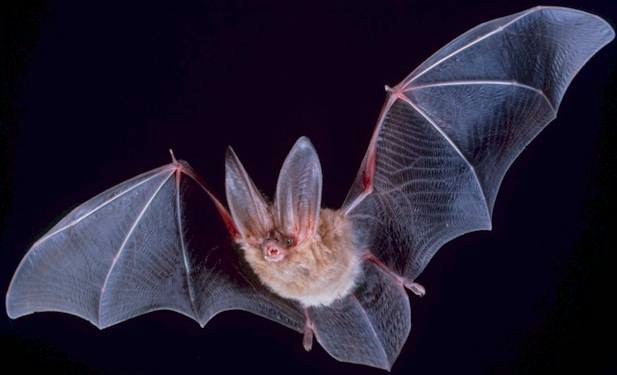
WNS is not merely a cosmetic issue; it wreaks havoc on bat colonies, disrupting their hibernation patterns and depleting their fat reserves prematurely. Afflicted bats often exhibit abnormal behaviors, such as daytime activity and erratic flight, leading to increased energy expenditure and ultimately death due to starvation or exposure.
Bats: Nature’s Pest Control
The impact of WNS extends far beyond the bats themselves. Bats play a crucial role in maintaining ecosystem balance by consuming vast quantities of insects, including agricultural pests and disease vectors like mosquitoes. With declining bat populations, there is a potential ripple effect on agriculture, public health, and biodiversity.
Factors Facilitating Spread
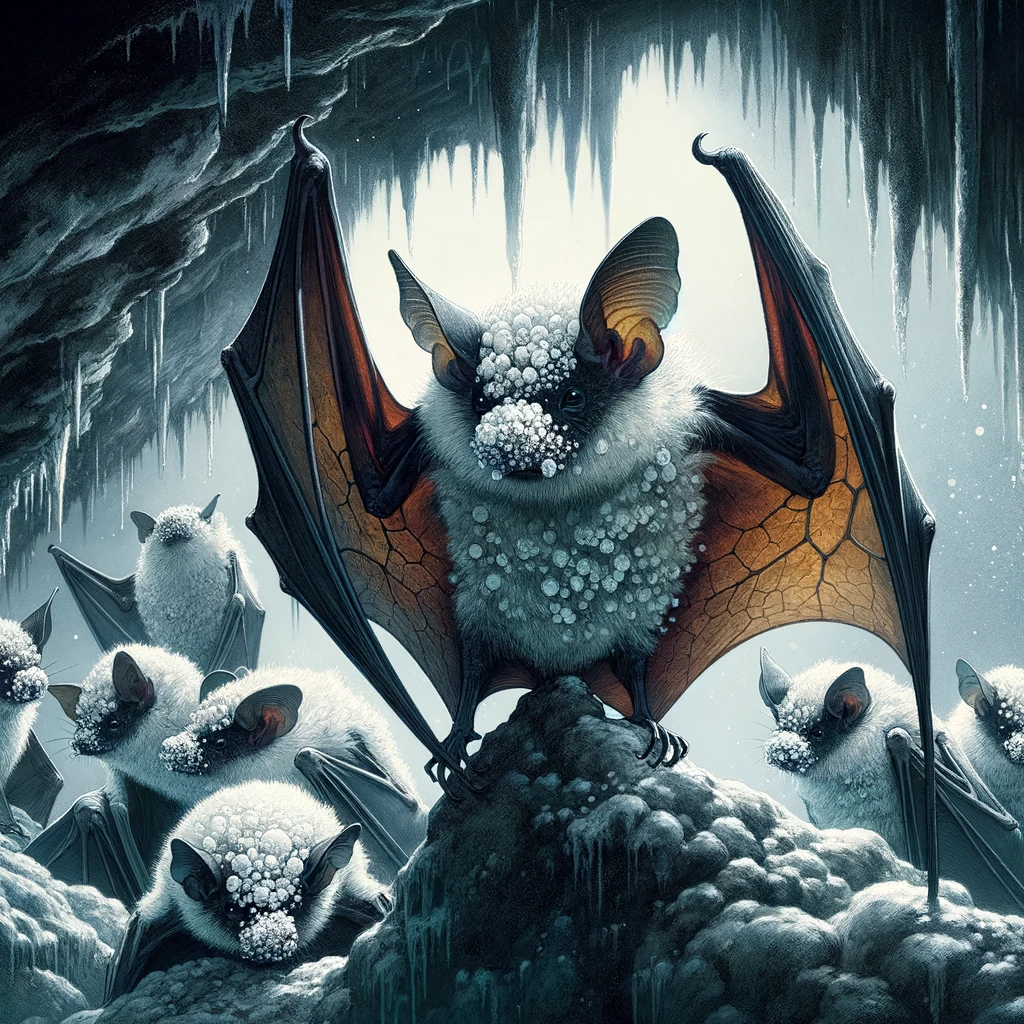
The spread of WNS is facilitated by various factors, including cave tourism, recreational caving, and human-mediated transportation of fungal spores. Once introduced to a new area, the fungus can persist in the environment, posing an ongoing threat to local bat populations.
Race Against Time
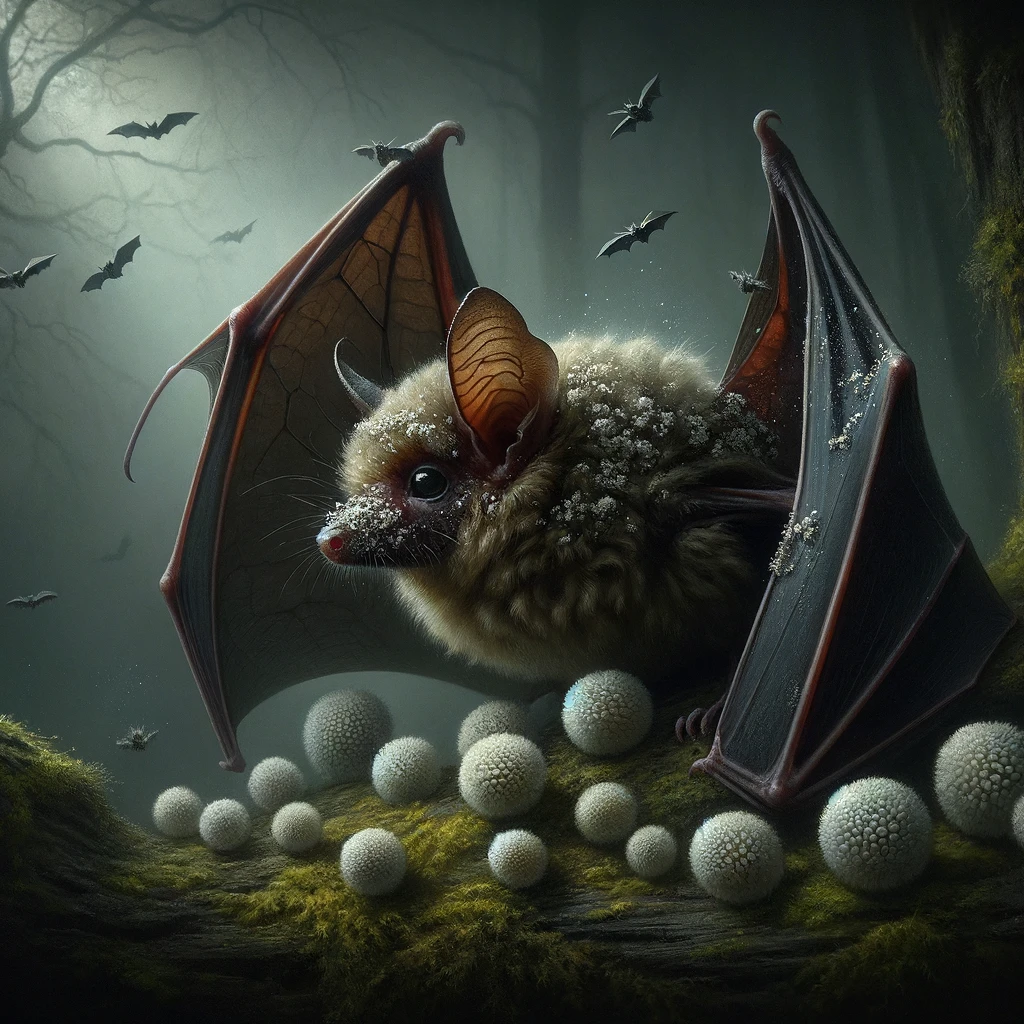
Despite mitigation efforts, the outlook for America’s bats remains uncertain. WNS has decimated some bat species, with mortality rates exceeding 90% in affected colonies. The Little Brown Bat (Myotis lucifugus), once one of the most abundant bat species in North America, has experienced particularly dramatic declines due to WNS.
Hope on the Horizon
In response to the crisis, scientists, conservationists, and government agencies are racing against time to understand the dynamics of WNS and develop strategies to conserve bat populations. Research efforts focus on elucidating the ecology of the fungus, identifying genetic factors that may confer resistance to WNS, and evaluating the efficacy of potential interventions.
Raising Awareness

Public awareness and engagement are crucial components of bat conservation efforts. Educating the public about the importance of bats, dispelling myths and misconceptions, and promoting responsible cave visitation practices can help minimize human-mediated spread of WNS and foster support for bat conservation initiatives.
A Call to Action
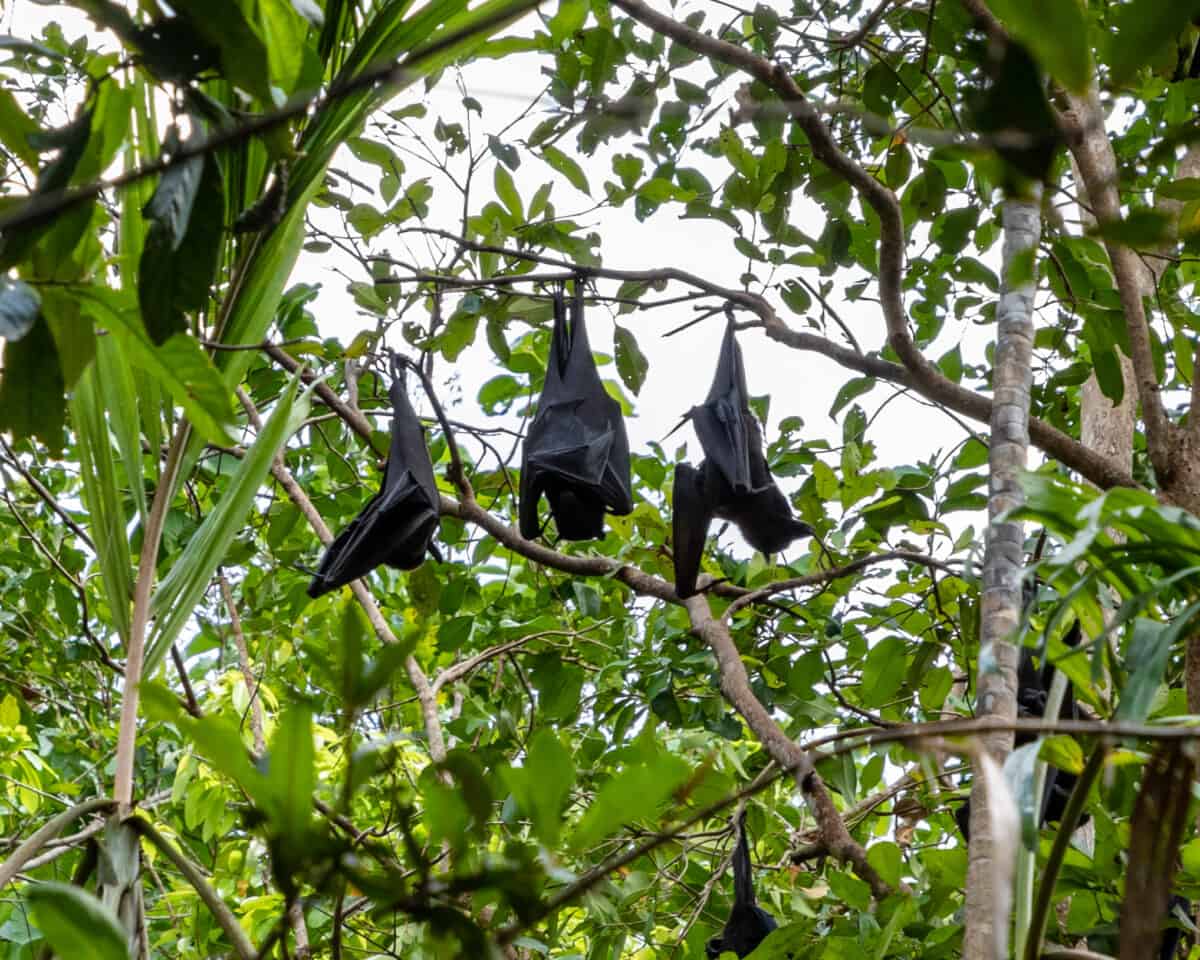
As America confronts the daunting challenge of White-Nose Syndrome, the fate of its bats hangs in the balance. The urgency of the situation demands collective action and unwavering commitment to safeguarding these remarkable creatures and the ecosystems they inhabit. Only through concerted efforts can we hope to turn the tide and secure a brighter future for America’s bats.
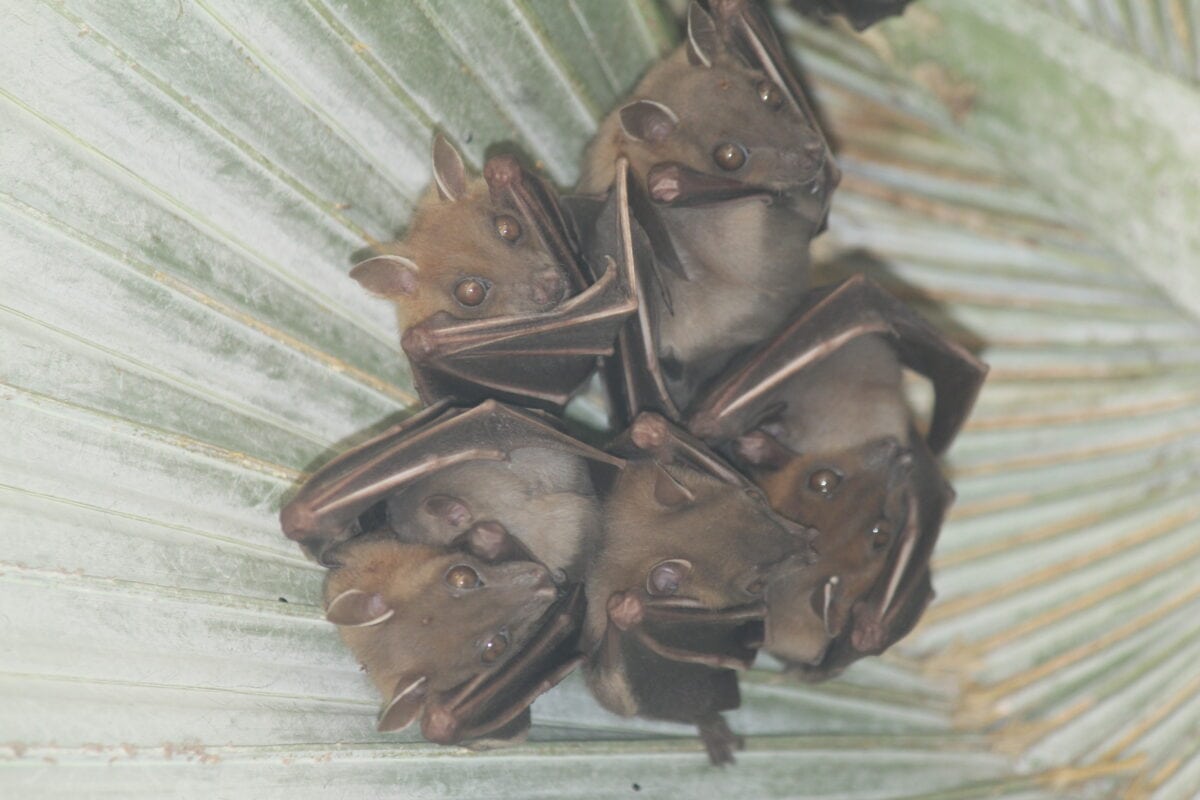
Up next:
Scientists Discover Vampire Bats Are Moving North
Bats – The Wonders of Chordata
Witness The Largest Colony Of Bats Ever Discovered
Join our Forum for free today!

- The Kleptomaniac Cat That Rules Houston - July 20, 2024
- Elephant Makes a Lifelong Friend at Sanctuary in Tennessee - July 14, 2024
- Evidence For World’s Oldest Fossilized Forest Discovered in New York - July 11, 2024

